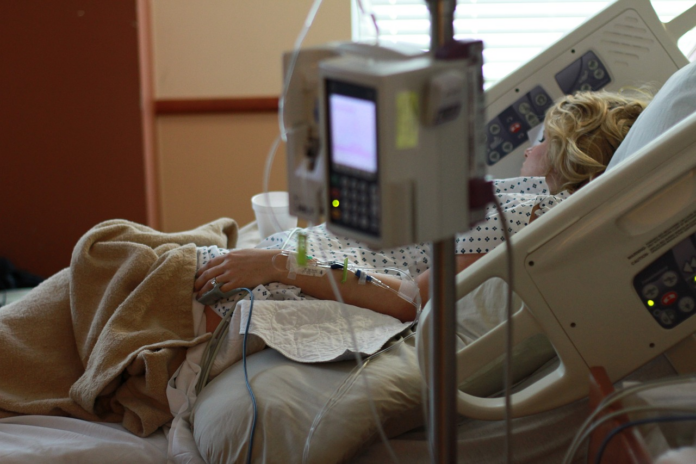Imagine your loved one is hospitalized. Wouldn’t you want to know they’re as safe as possible? That’s where technology steps in, playing a crucial role in ensuring hospital safety. From keeping track of patients’ health through remote monitoring to reducing medication errors, let’s delve into how technology is combating safety challenges in hospitals.
Data Visualization
Data visualization is an essential tool in managing and improving safety in hospitals. By transforming complex data into interactive, visual representations with this hospital safety infographic, healthcare professionals can easily identify trends, investigate discrepancies, and make informed decisions. For instance, a dashboard showing real-time patient data can alert staff to potential health risks before they become critical, such as elevated heart rate or low oxygen levels. Similarly, data visualization can help track the spread of infections within the hospital, providing clear geographical or temporal patterns that can guide targeted intervention.
Moreover, by visualizing staff workflows, administrators could identify bottlenecks or inefficiencies, enhancing the overall safety and quality of care. Ultimately, data visualization empowers healthcare professionals to make timely, data-driven decisions that improve patient safety and outcomes in hospitals. So next time you visit a hospital, rest assured that technology is working behind the scenes to keep your loved ones safe.
RFID and Barcoding
Radio Frequency Identification (RFID) and barcoding are invaluable technological tools in enhancing hospital safety. RFID tags attached to medical equipment, medications, and even staff and patient IDs enable real-time tracking and inventory management, reducing the likelihood of misplaced items or people. Similarly, barcoding can be used to ascertain the identity of patients and to match them precisely with their treatments or medical records, minimizing the chances of errors.
For example, a barcode system can prevent medication administration errors by ensuring the right drug is given to the right patient at the right time. These technologies also enhance the security of confidential patient data by restricting access to authorized personnel. Thus, RFID and barcoding systems are ensuring a safer, more efficient healthcare environment.
Electronic Health Records
Every patient has various health records that need to be kept safe. These are the following:
- Personal information
- Medical history
- Medication records
- Diagnostic test results
- Treatment and therapy records
- Hospitalization records
- Primary care and specialist visits
- Dental and vision records
- Family medical history
- Health and lifestyle habits
- Advanced directives and living will
Electronic Health Records (EHRs) offer a comprehensive, digitized view of a patient’s medical history, enhancing safety by reducing the risk of errors and inconsistencies. They improve the accuracy of diagnoses and treatment plans, minimize the chances of medication errors, and ensure critical health information is readily accessible in emergencies. Additionally, EHRs facilitate efficient communication among healthcare providers, ensuring continuity of care and facilitating safer, more coordinated patient treatment.
Medication Management System
A Medication Management System (MMS) streamlines the medication administration process, reducing the potential for human error in the prescription, dispensing, and administration stages. The system can cross-verify patient information, dosage details, and medication schedules, ensuring that the right patient receives the right medication, in the correct dosage, at the right time.
Furthermore, MMS provides timely alerts for possible drug interactions or allergies, preventing potentially dangerous adverse reactions. It also maintains a real-time, accessible record of medication use, facilitating communication among healthcare providers and improving continuity of care. In essence, an MMS fosters a safer, more efficient healthcare environment, minimizing medication errors and enhancing patient outcomes.
Telehealth and Remote Monitoring
Telehealth and remote monitoring have emerged as critical tools in maintaining hospital safety, primarily by reducing the need for in-person visits, thus minimizing the risk of spreading infections. They enable healthcare providers to monitor patients’ vital signs and symptoms remotely, allowing for early detection and intervention in case of health deterioration.
This leads to more timely and efficient care, reducing hospital readmissions and overcrowding. Additionally, it provides chronically ill or elderly patients with a sense of independence and comfort, as they can receive quality care from their own homes. In essence, telehealth and remote monitoring enhance patient safety by facilitating proactive, personalized, and efficient care.
Infection Control Tech
Advanced disinfection systems, such as ultraviolet (UV) light and electrostatic sprayers, effectively sanitize surfaces and hard-to-reach areas, killing harmful bacteria and viruses. In addition, hand hygiene monitoring systems ensure adherence to handwashing protocols among healthcare professionals, reducing cross-contamination risks.
High-efficiency particulate Air (HEPA) filters improve air quality by trapping airborne pathogens. Further, antimicrobial coatings on high-touch surfaces like doorknobs and bed rails inhibit the growth and spread of microbes. Thus, by utilizing infection control technology, hospitals can significantly minimize the risk of hospital-acquired infections (HAIs), ensuring a safer environment for patients and staff alike.
So, the next time you step into a hospital, have peace of mind knowing that technology is safeguarding your health at every corner. From data visualization to infection control tech, hospitals are leveraging these advancements to maximize your safety and care. Rest assured, your well-being is a priority in this ever-evolving digital healthcare landscape.










